Here is a new, technologically-dense V8 engine in the nose of a Bentley Continental GT (or GTC), able to accelerate said Bentley at a rate broadly similar to that managed by the still-available W12 engine and on to most of the top speed. ('Over 180mph' compared with 198: who, honestly, will complain at that?)
And here's the thing. In doing this, the twin twin-scroll-turbo, direct-injection V8 (co-developed with Audi) uses about 40 per cent less fuel. Not just on the pussyfooting 'Combined cycle' of the fantasyland official economy test, but – says Bentley engineering chief Brian Gush – in the real world. Now you can go 40 per cent further on a tankful, surely an appealing prospect even to those rich enough to buy a Bentley. Which leads you to wonder: where, exactly, did all the fuel slurped by the W12 go?
Here's how that 40 per cent – Bentley's target declared a couple of years ago – has been reached. The biggest chunk (16 per cent) comes from downsizing: the W12 has a 6.0-litre capacity, the V8, as reflects its lower cylinder-count, is a 4.0-litre engine (actually 3993cc). Next comes a ZF eight-speed automatic in place of the six-speed: six per cent. The V8 runs as a V4 under light load, with one bank's outer cylinders and the other's inners deactivated: five per cent.
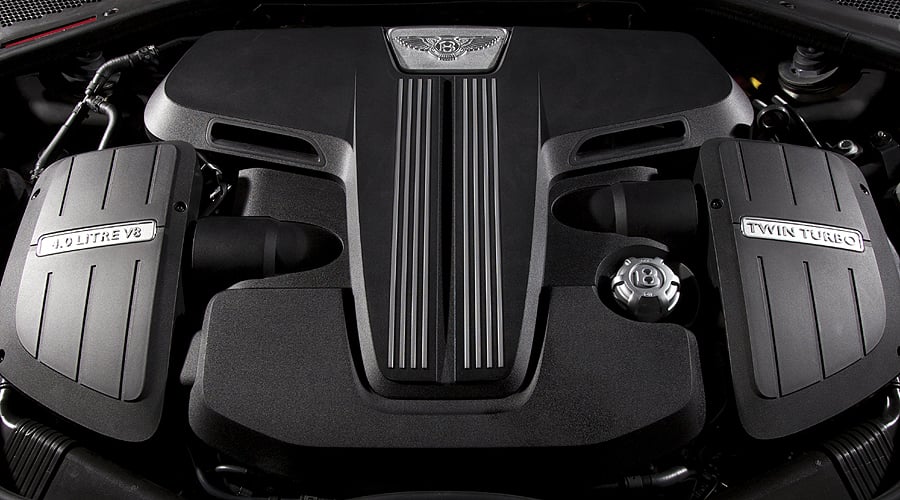
Now we're into details. Using power-steering energy only when needed, with an electro-hydraulic pump: three per cent. Same saving for some clever recalibration of the engine's electronic control unit. A small (25kg) reduction in weight and aerodynamic drag yields 2.5 per cent. Thermal management, including heating the gearbox oil from the engine's water circuit after a cold start: two per cent. Energy recuperation by electrically connecting the alternator only when slowing brings 1.5 per cent. Finally, low rolling-resistance tyres yield one per cent.
You'll notice there's no stop-start system, eschewed because drivers find it too annoying and the likely saving was deemed not worth the pain. Nevertheless, this is the closest we've ever got to a frugal Bentley, with provisional stats of 24mpg ('Combined') and 275g/km CO2.
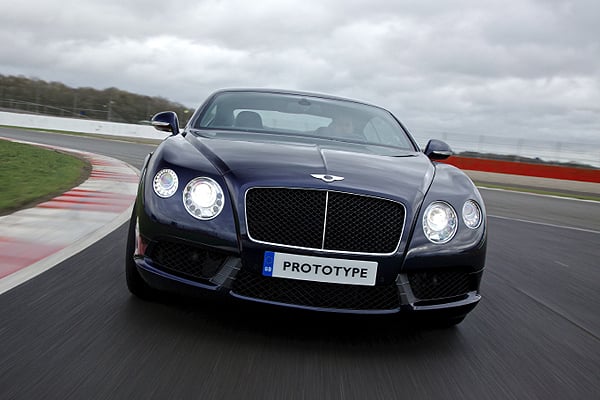

From the outside, you can tell a Continental V8 from a W12 by its black front grille mesh and its more aggressive front valance. Inside, it's fractionally less lavish with, for example, cloth instead of leather for the headlining and a single lid for the central storage box instead of split halves. Rubber mats and vinyl seats, too (only joking). Here is where some of the 10 per cent price reduction over the W12 is achieved, given that the engine and gearbox combination is little cheaper to make than the W12's. Pricing starts around £122,000, sales start in February.
Should the shortfall spoil your sybaritic expectations, the ample options list can be your saviour after which the notional price reduction will have largely evaporated. Will you then feel short-changed? The briefest of drives in a Continental V8 will dispel that notion, and a longer one will astound you.
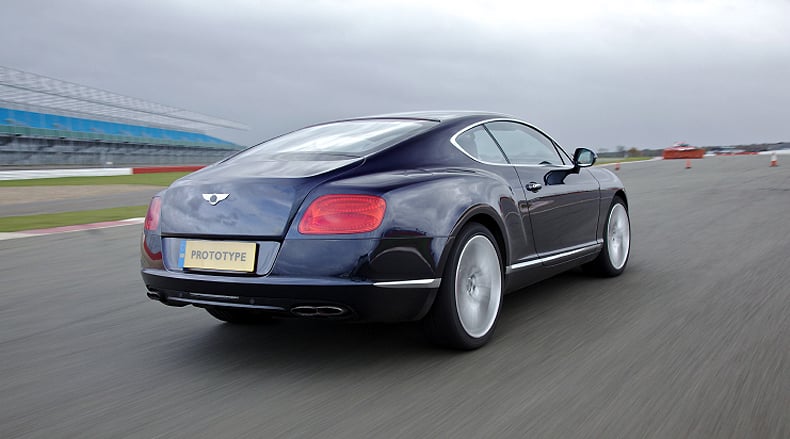
That fiercer front signals the V8's more sporting intent, with revised suspension and steering settings designed for a keener-feeling drive and making the most of that modest weight loss over the front wheels. As soon as you start the engine, you sense that was a very good move. There's a deep-bass exhaust note, powerful and menacing, increasingly overlaid by a staccato crackle as the revs rise towards the 6000rpm, 500bhp power peak. (The W12 makes 567bhp, incidentally, and sounds much less appealing in the process.)
Here is Bentley as a maker of a proper, Ferrari- and Aston-rivalling, hard-edged pleasure machine. Maybe it does take 0.3sec longer to reach 62mph than the W12 does, but at 4.9sec who, again, is complaining? The way it rockets is far more pleasurable, helped by undetectable turbo lag, swift and definite gearshifts which are still perfectly smooth, and that fabulous soundtrack. In expected Bentley fashion there's huge urge available from very low engine speeds, which continues in a torrent as the musical explosion escalates. Peak torque of 487lb ft arrives at 1700rpm (a lower crankshaft speed than in the Audi A8 version) and stays there right up to 5000.
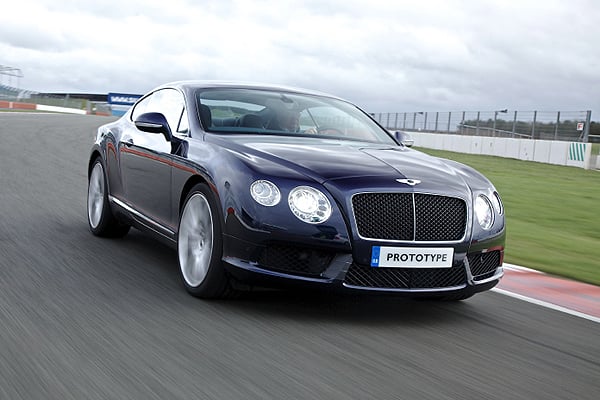

Just as good – maybe even better, actually – is the way the Continental attacks bends. This is a 'fast lorry' (thank you, Ettore Bugatti) no more. On the contrary, it is the lightest-footed, most agile, most interactive Bentley road car there has ever been, and that includes the previous-generation Supersports. This GT feels like a car two-thirds the weight, keen and responsive and easy to place to the nearest inch. Yet on the bumpy, undulating roads around Silverstone it proved supple and resolutely composed, its adaptive dampers best left towards the comfort end of the scale.
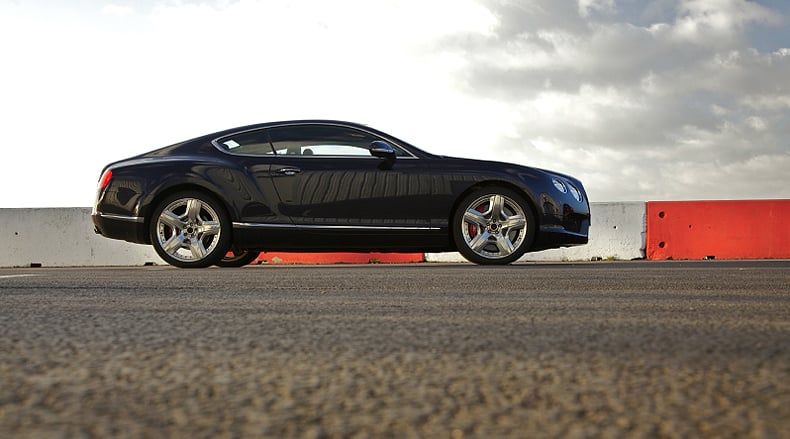
That's Bentley's new V8 Continental, and it's brilliant. What's the point of the 384g/km W12 now?
Photos/Sound: Bentley









